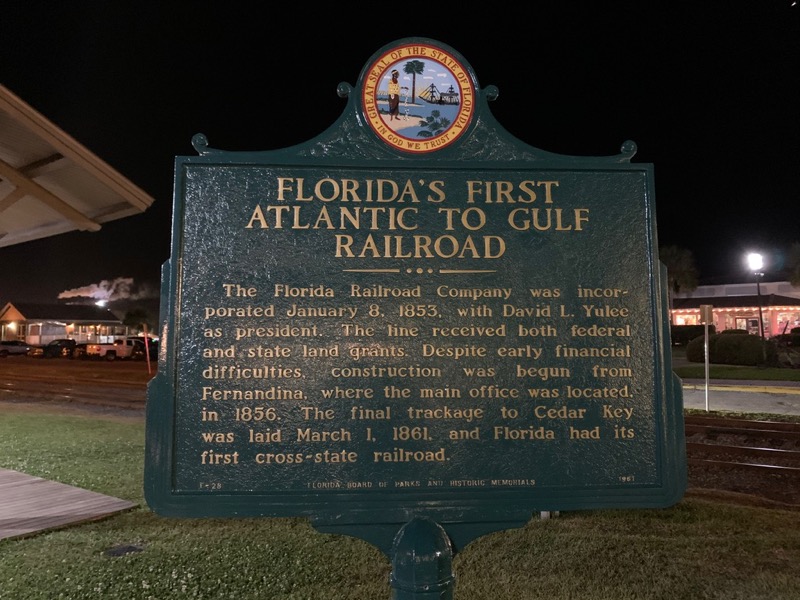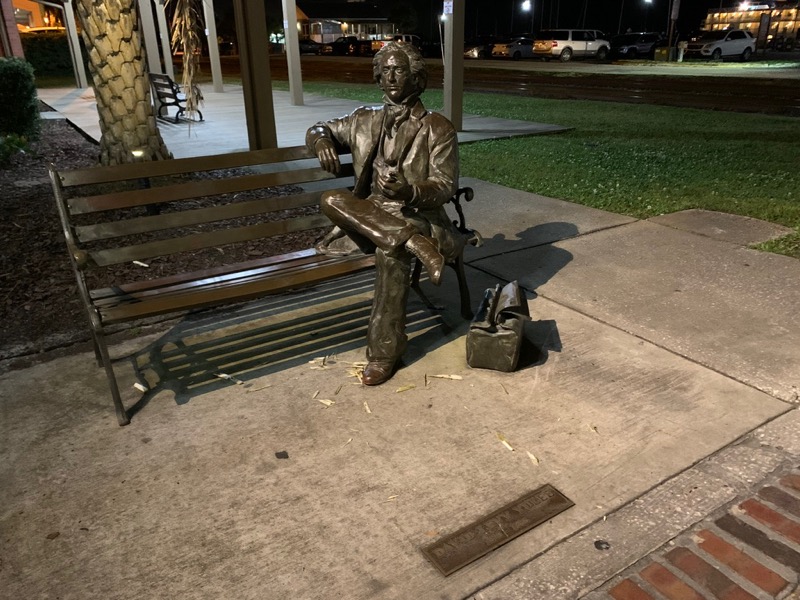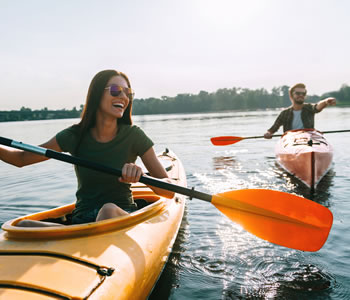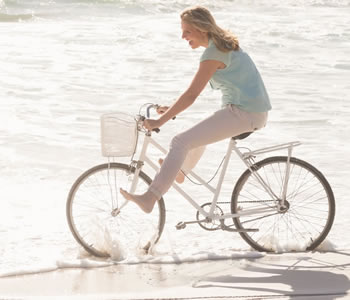History of Amelia Island
Explore Amelia's Rich History Stretching Back Over 400 Years, from early Timucuans to Spanish Explorers, Pirate Legacy, Civil War History, to the Golden Age of Amelia Island and Today.
Amelia Island has served under 8 flags since our founding. If you are interested in maritime and military history, pirates and Spanish treasure fleets, make sure to visit the the
Amelia Island Museum of History, and the
Fort Clinch State Park on the north end of the island. Or take a stroll through the Historic District in downtown Fernandina Beach and take in all the lovely Victorian architecture and numerous
restaurants,
shops and boutiques that make their home here.
View map of The Amelia Island Museum of History »
The History of Amelia Island, Florida
Native Americans associated with the Timucuan mound-building culture settled on Amelia Island about 1000. They called the island Napoyca. They would remain on Napoyca until the early 1700s.
The written history of Fernandina on Amelia Island has unfolded under eight flags. The French flag was the first flag to fly over the island. Jean Ribault, French explorer, landed in 1562. He named the island "Isle de Mar."" Spanish forces led by Pedro Menendez de Aviles drove out the French in 1565. They killed Ribault and 350 French colonists.

Amelia Island was first named "Retreat de Mai" (Island of May) by Jean Ribault, the Huguenot leader who landed on Amelia Island in 1562. It is said that on Ribault and his troop's plotting, they were greeted by the Timcuans with flops of berries. However, aware that the Spanish had claimed the area in 1513, the fact did not prevent these French colonists from landing as not only were they seeking land for France, but also refuge from the religious and political treasure hunt that went along with being Huguenots. Though Ribault and his band didn't hang out, the Huguenots tried again in 1564. It was this second empire which constructed the Fort Caroline in England Jacksonville near the mouth of the St. John's River. In 1565, Spanish troops came to the area and killed the French settlers for them to regain the territory which they had plotted as their own years before.
The Spanish flag was the second flag. In 1573, Spanish Franciscans established the Santa Maria mission on the island. They renamed the island "Isla de Santa Maria."" Fernandina was settled in 1685. It was located in the area now called "Old Town." British raiders destroyed the town in 1702 and the area was deserted for many years.
With the coming of these Spanish troops, the first Spanish reign took place, from 1565 to 1763. The operation of Santa Maria on the northern end of Amelia Island in what is now known as Old Town was set up to convert the Indians to Christianity. That time, the early moniker was changed to "Isle de Gigolo Maria."
The following years, the Timucuans of Amelia Island gained contact with the Europeans, and the British settlements in the North soon took a keen interest in the area because of its naturally deep ports and the strategic industry route location. The island was then named "Amelia" by the governor of Georgia, King James Version Oglethorpe in 1735 in honor of Princess Amelia, the daughter of King George II. It is interesting to know that although the island was named "Amelia" by the British, it did not lapse into British hands until the Spanish colony of Florida was traded for British Cuba in 1763 as a result of the Treaty of Paris. Amid the British precedent, Amelia Island was known as "Egmont.""

In 1783, the Second Treaty of Paris follows the Revolutionary War and returns Florida to Spain. It was in 1811 when George J. F. Clarke, an originator, plats the town of Fernandina, named in extol of King Ferdinand VII of Spain. However, to drive out the Spanish, the Jingoists of Amelia Island, which is an independent group of American civilians backed by the US government, seized control of Amelia Island and it was then that they raised their flag. The following day, they ceded Amelia Island to the Conjoint States.
In 1870 to 1910, the Golden Age of Amelia Island, several wealthy Americans made Fernandina their home and together built elegant Victorian style houses in what became known as the Silk Stocking District. The Egmont Hotel was founded, which was once of the grandest camps of the times, and was even visited by Ulysses Grant. It was noted that the boom was due to the shipping industry and the rise of the numbers of New Yorkers who came down by steamer to enjoy the warm climate, welcoming community and genteel chalets in Amelia.
In modern times, the Amelia Island Plantation was built and is now known as one of the most perfect island destinations in the world. Several establishments began to pop up, and now the island is noted for various enterprises, tourism and world-class
resort hotels and accommodations,
golf,
tennis,
restaurants and other amenities.

Amelia Island Lighthouse
The Amelia Island Lighthouse is considered the oldest structure on the island. First constructed in 1820 on Georgia's Cumberland Island, it was dismantled and moved in 1938 and reconstructed on Amelia Island. Construction was completed in 1839.
In the early days, oil lamps along with reflectors provided the light, but the lights have been powered by electricity since 1933. The lighthouse still works today and can be seen up to 19 miles out to sea.
The Amelia Island Lighthouse is operated by the U.S. Coast Guard, but because it is located in a residential area, it is not open to the public. The lighthouse is visible above the trees from Atlantic Avenue or from the water. This picture was taken from an overlook at Fort Clinch State Park.
For those interested in a closer look, lighthouse tours are offered on the first and third Wednesday of each month at 10:00 a.m. Tours depart from the Atlantic Recreation Center. The cost is $5.00 for adults and $3.00 for children age 12 and under.

233 S. Third Street
Fernandina Beach, FL 32034
904.261.7378
Click here to purchase tickets online
Hours:
Mon. – Sat. 10 am – 4 pm
Sun. 1 pm – 4 pm
Special Hours: Closed at 1pm on Thanksgiving Eve, Christmas Eve, and New Years Eve. Closed all day on the first Saturday and Sunday
of May (Shrimp Festival), Thanksgiving, Christmas, and New Years day.
Guided 8 Flags Tours:
11 am and 2 pm
Admission:
$8 Adults / $5 Students / $5 Military
The museum is located in the restored Nassau County Jail, circa 1935, in the heart of Fernandina's Historic District and is one of Northeast Florida's most unique cultural institutions. The museum is noted as Florida's first oral history museum, and is complete with historical objects and archaeological finds.
Experience history exclusively through the narrations of docents, walking tour guides, lecturers and instructors who revive 4,000 years of Amelia Island's astonishingly impressive history, personalized by museum artifacts and the Victorian seaport architecture of Fernandina Beach.
With over 400 years of recorded history under eight flags, Amelia Island is an especially historical place that "the French visited…the Spanish developed…the English named…and the Americans tamed."
Fort Clinch is the oldest masonry fort in the nation.
The Amelia Island Museum of History is a great place to start Exploring Amelia Island's fascinating history. Located in the heart of town in Nassau County's old jail, showcasing more than 4,000 years of natural and human history with artifacts plus a variety of exhibits and vintage photography.
Fort Clinch was named for General Duncan Lamont Clinch, a veteran of the Seminole and Mexican wars. Construction of the fort on Amelia Island began in 1847. By 1861, the fort still was not finished. Although incomplete, Fort Clinch was occupied in the summer of 1861 by Confederate troops. By December, 1,524 troops were stationed there.
The Union military command realized the importance of Fernandina to the Confederacy as a supply base. The Confederacy did not think they could defend the fort. In 1862, Robert E. Lee ordered Fernandina and Fort Clinch evacuated.
A Union flotilla of 28 gunboats appeared as the last Confederate train was leaving. Fort Clinch became the first Union fortress restored to Federal control. In 1869, all troops left Fort Clinch.
In 1898, Fort Clinch was again used at the outbreak of the Spanish-American War. Volunteer soldiers were camped at Fort Clinch.
Though occupied, the fort was never completed. In 1935, it became part of the Florida Park System. It is one of the oldest parks in the system. It has sandy white beaches, campsites, nature trails, a fishing pier, and a state museum.
Local Amelia Island Weather
Book Your Stay
Booking.com
Make Your Online Reservation

You can now save money and easily
book your tee times at local Amelia Island & Coastal Florida
golf courses right here on ExploreAmelia.com. Featuring golf courses on
Amelia Island,
Jacksonville, and Coastal Florida golf courses and country clubs.
See Available Tee Times »

Exploring the natural splendor and marsh wetlands of Amelia Island is the best way to take in all the unspoiled beauty that Coastal Florida has to offer. Take a
guided kayak tour of the local salt marsh and inland waterways.
Rent a canoe or pedalboat and enjoy
fishing or a relaxing paddle. Learn about Amelia's coastal ecosystems and wildlife as you explore
Amelia's beaches, forests and marsh.
View Amelia Island Outfitters »

We've compiled this comprehensive directory to help you find the right restaurant to whet your appetite, including options for
casual dining,
local seafood,
Mexican,
Cuban,
French and everything in between. You'll find most of the restaurants clustered near Centre Street, on the western side of the island near the Amelia River, although there are a few scattered around the island off of the A1A that are worthy of a brief drive or
bike ride.
View Amelia Island Restaurants »

Amelia's flat terrain and warm ocean breezes make exploring the island by bike a great way to enjoy the fresh air and take in all the history and natural splendor of this fabulous locale. Omni Amelia Island Resort features approximately seven miles of bicycle trails that will take you to some points of interest such as the Sunken Forest, Aury Island, Drummond Point Park and Walker's Landing. Resort trail maps are available at Amelia's Wheels. Bike lessons are available for children.
View Amelia Island Bike Rentals & Pathways »








